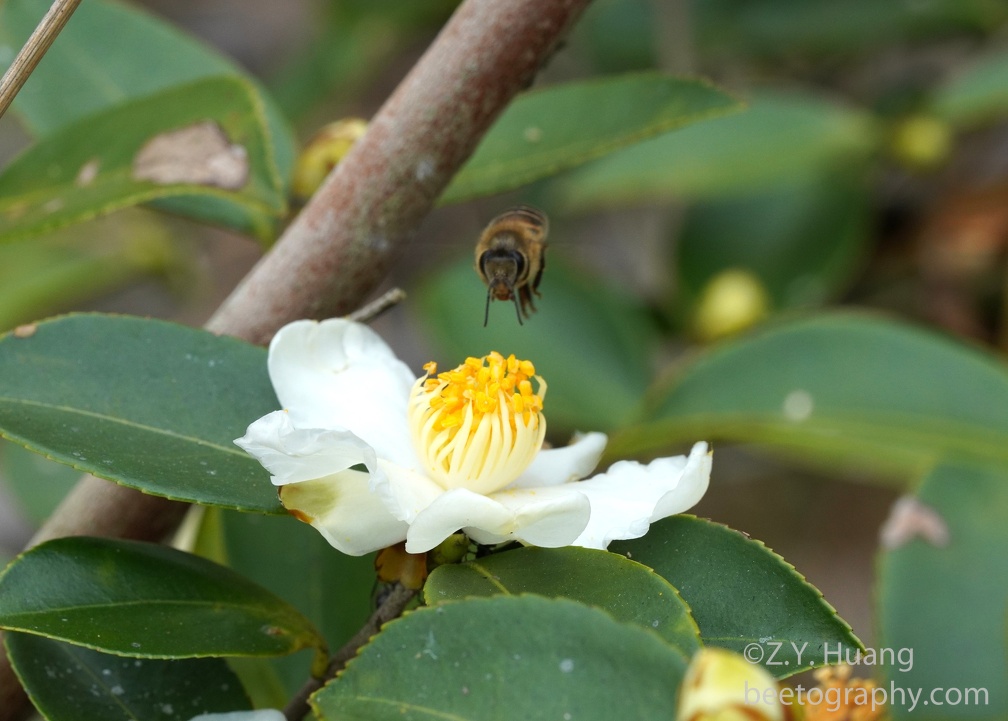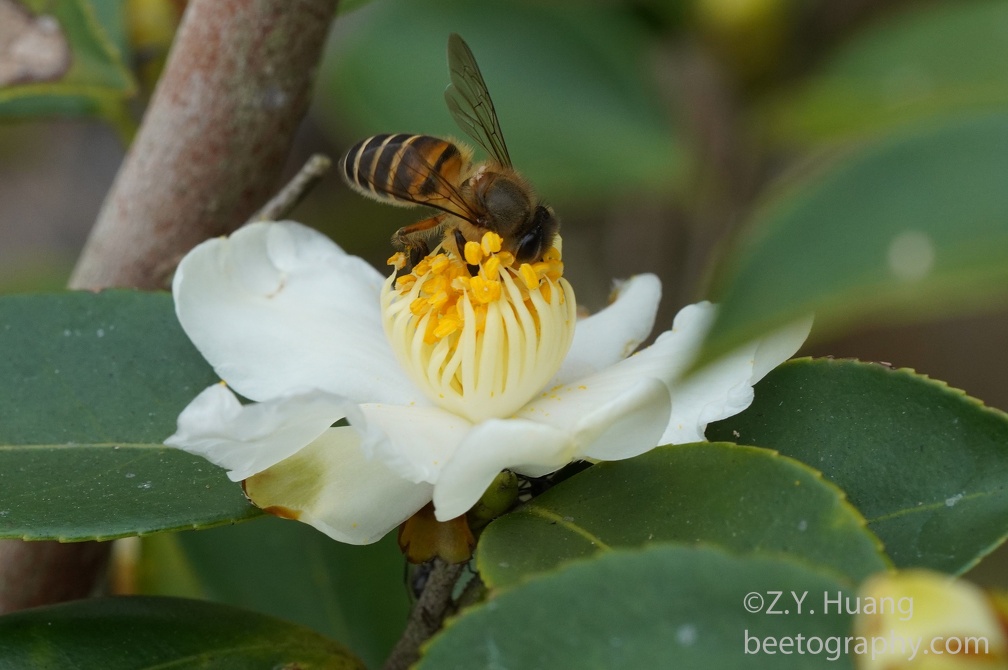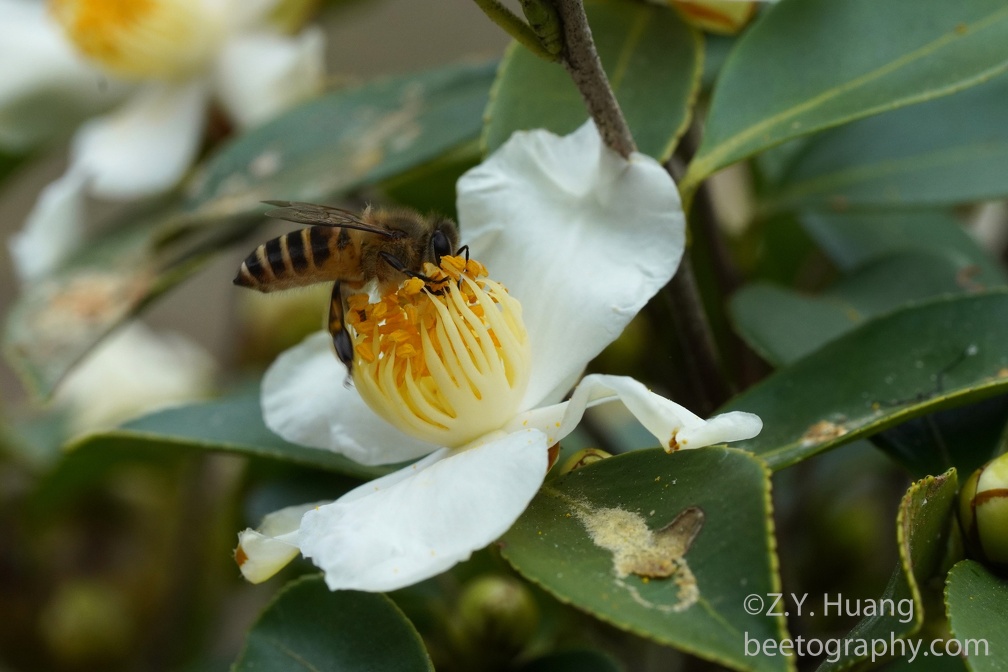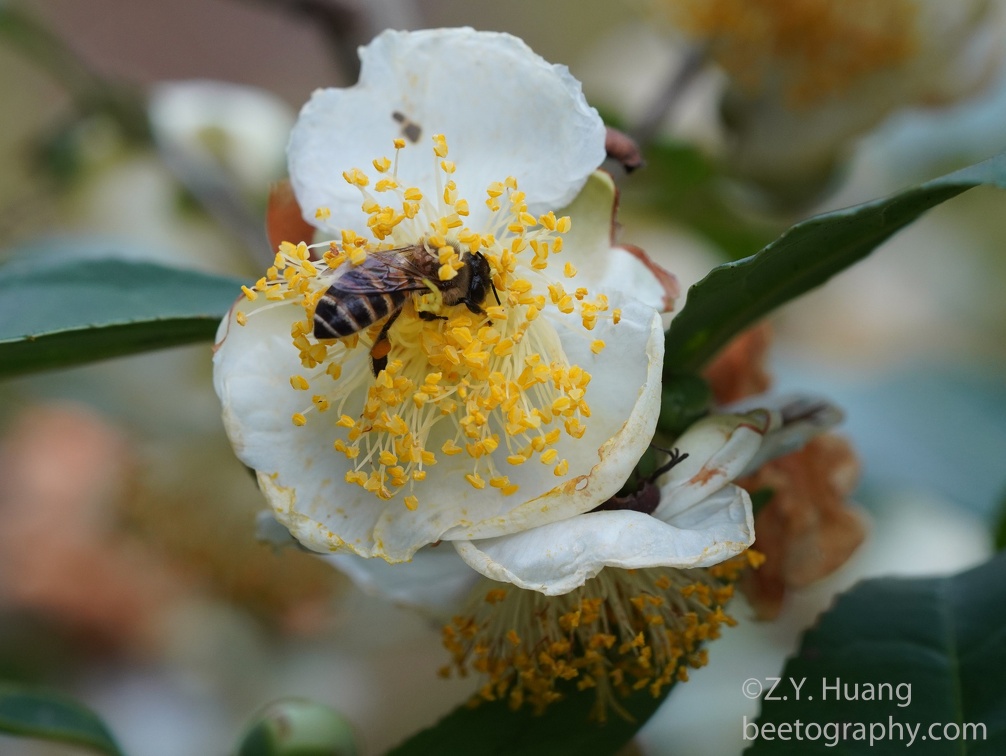| Family: | Theaceae |
| Genus: | Camellia |
| Species: | C. oleifera |
| Common names: | Tea oil camellia |
| ZBAS | 2 |
An important oil crop in Southern China, widely planted in Hunan, Jiangxi, and Fujian Provinces. The total planted area in China is estimated over 11.53 million acres with a total production of tea oil at 1 million metric tons per year (China Economic Daily, 2023). The oil produced by this plant is said to be healthier for human consumption due to its higher percentage of unsaturated oils. It is in the same genus as common camellia, or the tea plant (Camellia japonica) which also blooms in winter. Early Nov 2023, I visited one tea oil camellia farm in Hunan, and looked around for 40 min and never saw a single honey bee on flowers. It was known that A. mellifera would visit this flower (each flower has over 100 ul nectar!) but there are some sugars in the nectar which kills the brood. The main sugars not digestible by bees are: manninotriose, raffinose, and stachyose (Li et al 2022). A. cerana is affected less by these sugars but still affected. There are some native bees (Andrena camellia, Colletes gigas, Li et al 2021) that can pollinate this plant but I did not see them on my recent trip.
But I was truly lucky! while a two day trip from Guangzhou to Hunan did not yield any bees on tea oil camellia, my one day trip to Fujian on Nov. 30, 2023 was a success in shooting bees on this flower. We were visiting a remote research station and trying to see if we could see bees foraging on Eurya but then I saw a farmer working in a small field with about 15 tea oil camellia trees. I asked him if he had seen bees on these flowers because they were blooming. He said no, too cold (it was about 15°C that day). Then I saw one bee foraging on the flowers! I quickly went down to the field and started shooting bees. There must be about 5-6 A. cerana foraging on the flowers. This might be because there were some colonies in front of a house only less than 50 meters away.
- An Apis cerana right before landing on a Camellia oleifera.

2. An Asian honey bee foraging on C. oleifera. She seems to be trying to reach the nectar which is at the base of stigma, surrounded by anthers.

3. Another bee foraging on the same flower.

We stopped shooting then went on and I saw another bush with more bees. But this one the flowers were smaller and mostly facing down. After a while I realized it is a different species, the tea flowers (C. japonica). I also got a few good photos. I have previously shot many photos of A. mellifera foraging on this plant, but this time it is nice to have the other species also. Right now I lack photos of A. mellifera foraging on C. oleifera though. Perhaps a trip to Atlanta Botanical Garden some day will help this — I have seen wiki photos with our bees foraging on this Chinese plant at the garden.
4. A. cerana foraging on the tea flowers (C. japonica). Notice that anthers are more loosely organized compared to the C. oleifera flowers in Fig. 1-3. For photos of A. mellifera on this plant, please see http://bees.msu.edu/tea-flowers.

References:
China Economic Daily, 2023. How to increase oil production of tea oil camellia. July 25, 2023. http://www.news.cn/fortune/2023-07/25/c_1129766323.htm. visited 12/31/2023.
Li, H.-Y., A.-C. Luo, F.-Y. Dou, R.-M. Kou, M. Orr, C.-D. Zhu, D.-Y. Huang, 2021. Comparison of the pollination efficiency of Apis cerana with wild bees in oil-seed camellia fields. Basic and Applied Ecology 56. DOI: 10.1016/j.baae.2021.08.005
Li, Z., Q. Huang, Y. Zheng, X. Li, S. Zhong, Z. Zeng. 2022. Identification of the toxic compounds in Camellia oleifera honey and pollen to honey bees (Apis mellifera). J. Agric. Food Chem. 2022, 70, 41, 13176–13185. https://doi.org/10.1021/acs.jafc.2c04950

